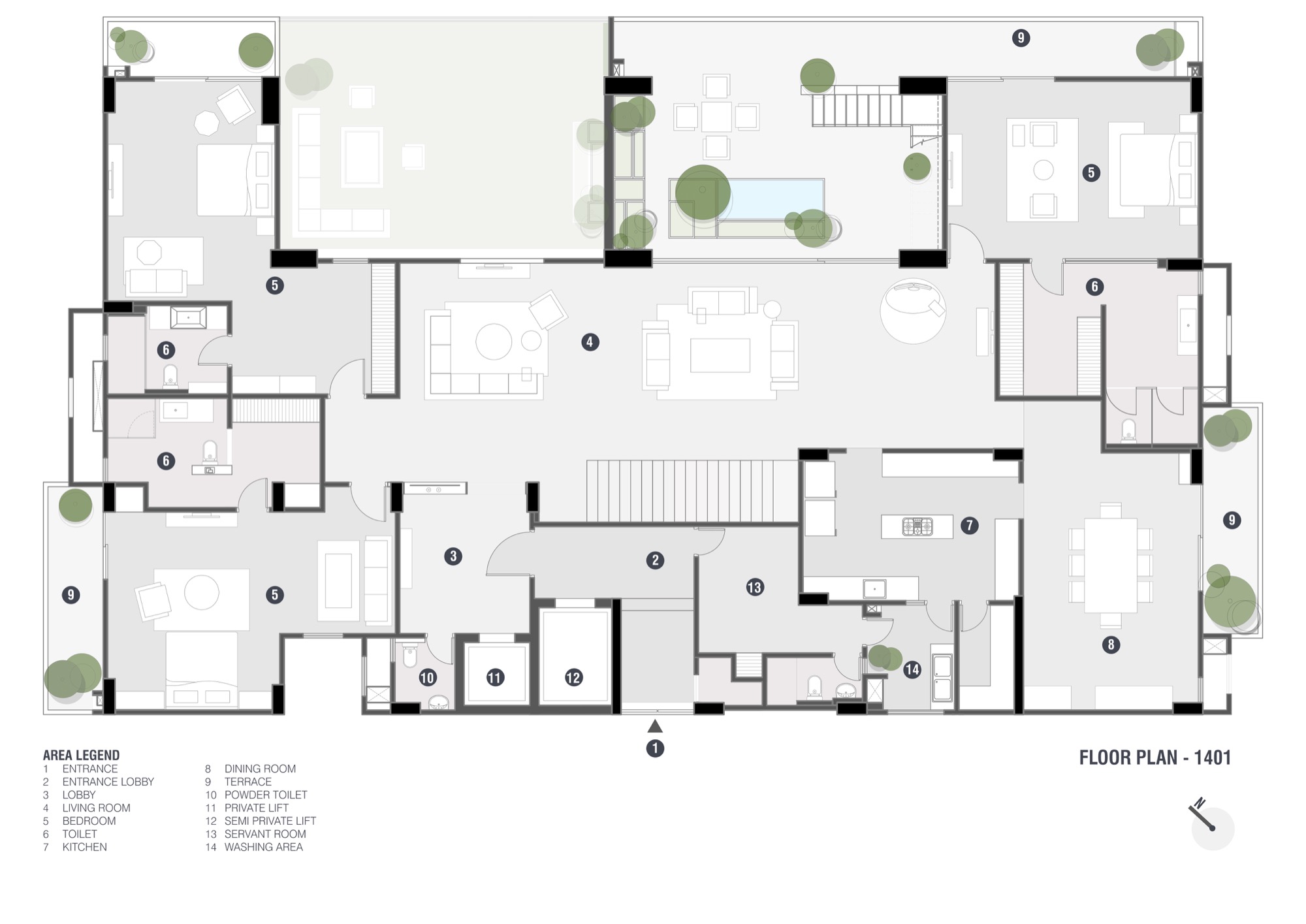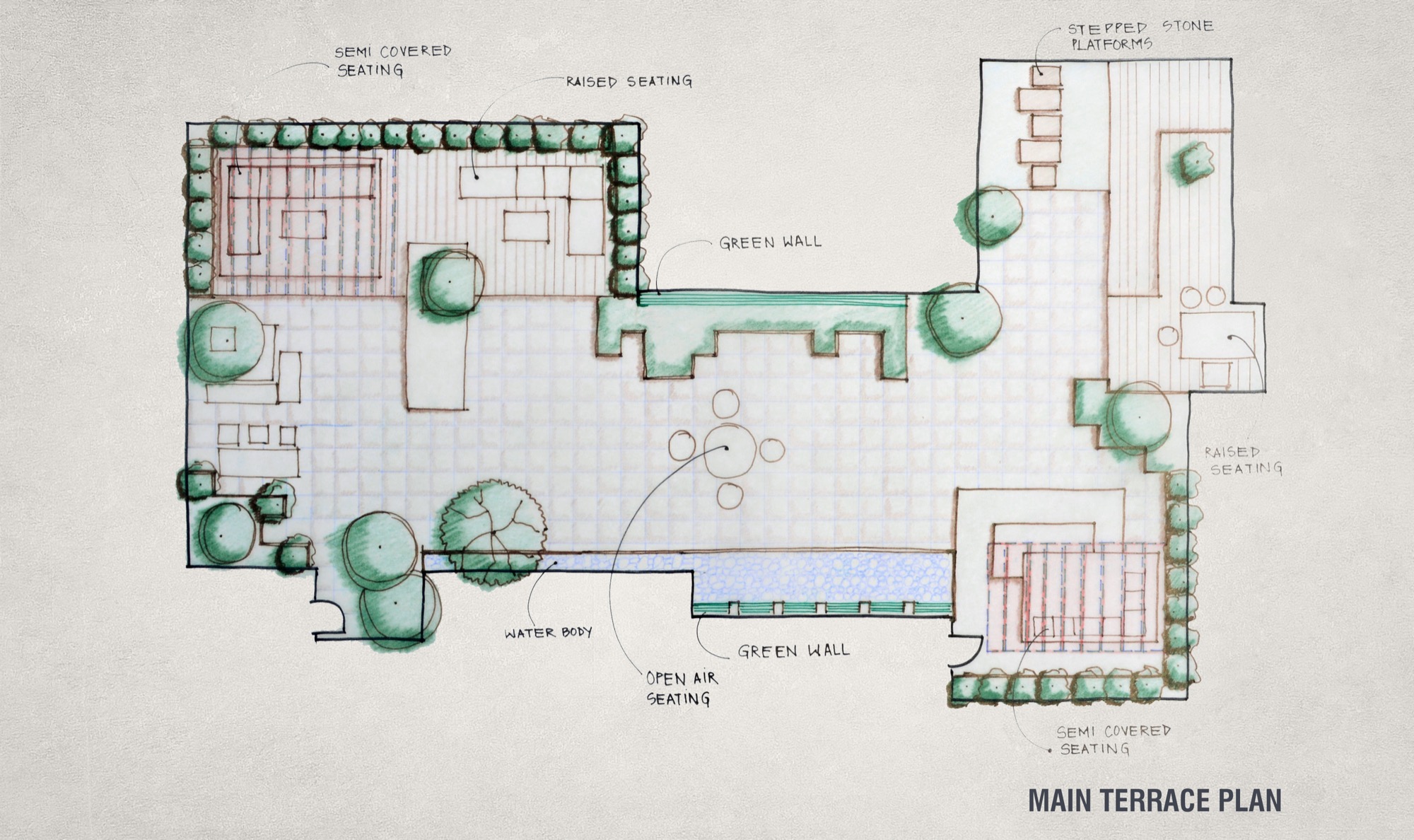Text: Conarch Architects
What would one expect, when two apartments in a high rise with a great transformation potential, a collaborative client, and a dedicated team of craftspersons come together? An architectural equivalent of picture perfect, maybe?
Penthouse Pāfekuto is a pied-à-terre for a family, a resting place to facilitate their frequent visits to the city. Designed as a lively and a sensual world, it is a multi-level penthouse with 8000 square feet of indoor area and 6000 square feet of outdoor space spread across three levels. The design vision is centred on transforming generic apartment units into a functional, versatile and inspiring living space that honours client specific needs and reflects their lifestyle.
To create a spacious home, two separate apartments on top of one another were combined into this luxury penthouse and ownership rights were acquired to the high rise tower’s terrace above for private use. One apartment is primarily designed as a master suite, private workspace, a guest bedroom and sit out area. The second apartment, internally connected with the first one, includes a spread out indoor & outdoor living area, a kitchen and three bedrooms. Connecting the two units internally has a major advantage- passive ventilation. The staircase opening between the levels acts as a chimney and helps release hot air from the window openings at the upper floor, inducing natural air moment in the apartment. This restricts the need for mechanical air conditioning to extremely hot days.
The focal point of the space is the cantilevered floating wood steps with the artistic fall protection in a Prussian blue backdrop. Created in a simple style that belies its complexity, this protagonist of a staircase is meant to sit lightly to let light and conversations through, emphasizing the interconnected relationship between the levels.
The spatial form in the project has emerged from a host of variables and constraints, such as the needs of a family with teenage children, structural limitations of the high rise building and limited flexibility in relocating plumbing and electrical services. We ripped down the walls, overhauled the space custom designing the penthouse in its entirety with the melody of balance, contrast, proportion and colour while grounding every move in logic and aesthetic precepts.
High rise living is synonymous with a detached and siloed existence. We sought to change that for our client. We laid out the spaces such that bedrooms, living areas and even kitchen, have a visual connection to the ‘green’ outdoor terraces. Some of the areas open directly to these staggered, double height open spaces located at two levels. Imagine the feeling when you rise from your bed in the morning and the first thing you see is about 50 feet of extended green area. Research shows that encounters with nature help alleviate mental fatigue by relaxing and restoring the mind. Well now, the occupants can experience these benefits.
As evident in the circular niche in the office lobby or the kitchen partition, we have been to great lengths to establish this connection to outdoors, even in the spaces deep inside the unit. Crucial to the story of the home, this link to the outdoors invokes a feeling of ‘front yard’, a rarity in high rise setting. The connection to the outdoors has another benefit- daylighting. The entire unit is effectively illuminated with natural light, eliminating the need for artificial lighting throughout the day and significantly reducing energy loads. The exterior glass letting in the light remains shaded due to deep overhangs of the outdoor terraces. Since there is no direct incident solar radiation on the glass, the heat gain is minimal, resulting in low cooling load requirement.
To establish a sensorial connection and meet the human necessity to connect with natural systems, both the levels extend into double height outdoor areas. The upper level leads to the tower’s roof level terrace, unfolding into a place for gathering, refuge and play. At a time when birds are becoming increasingly scarce in the city, the roof terrace with its hydroponic ‘Living wall’, Plumeria & bonsai trees, Ficus trees, flowering plants and water feature can be seen attracting migratory birds. The resulting benefits are two prong- a well-designed green roof is slowly becoming an ecosystem for bird-habitat regeneration and now, the kids in the family can emotionally and physically benefit from spending more time outdoors interacting with all things natural.
Project Facts:
Project name: Penthouse Pāfekuto
Architect’s Firm: Conarch Architects
Project location: VVIP Addresses, Ghaziabad, Uttar Pradesh, India
Completion Year: 2018
Gross Built Area: 18,900 Square Foot
Principal Architect: Ar. S.K. Goel
Project Lead Architect: Ar. Nitish Goel
Project Team: Pushplata Dinkar, Tanya Kumar, Usha Narain, Suman Singh.










































2 Responses
Woah! Beautiful!
Beautiful! I wish someday I could live at such place. This is totally a dream house! Kudos to them.